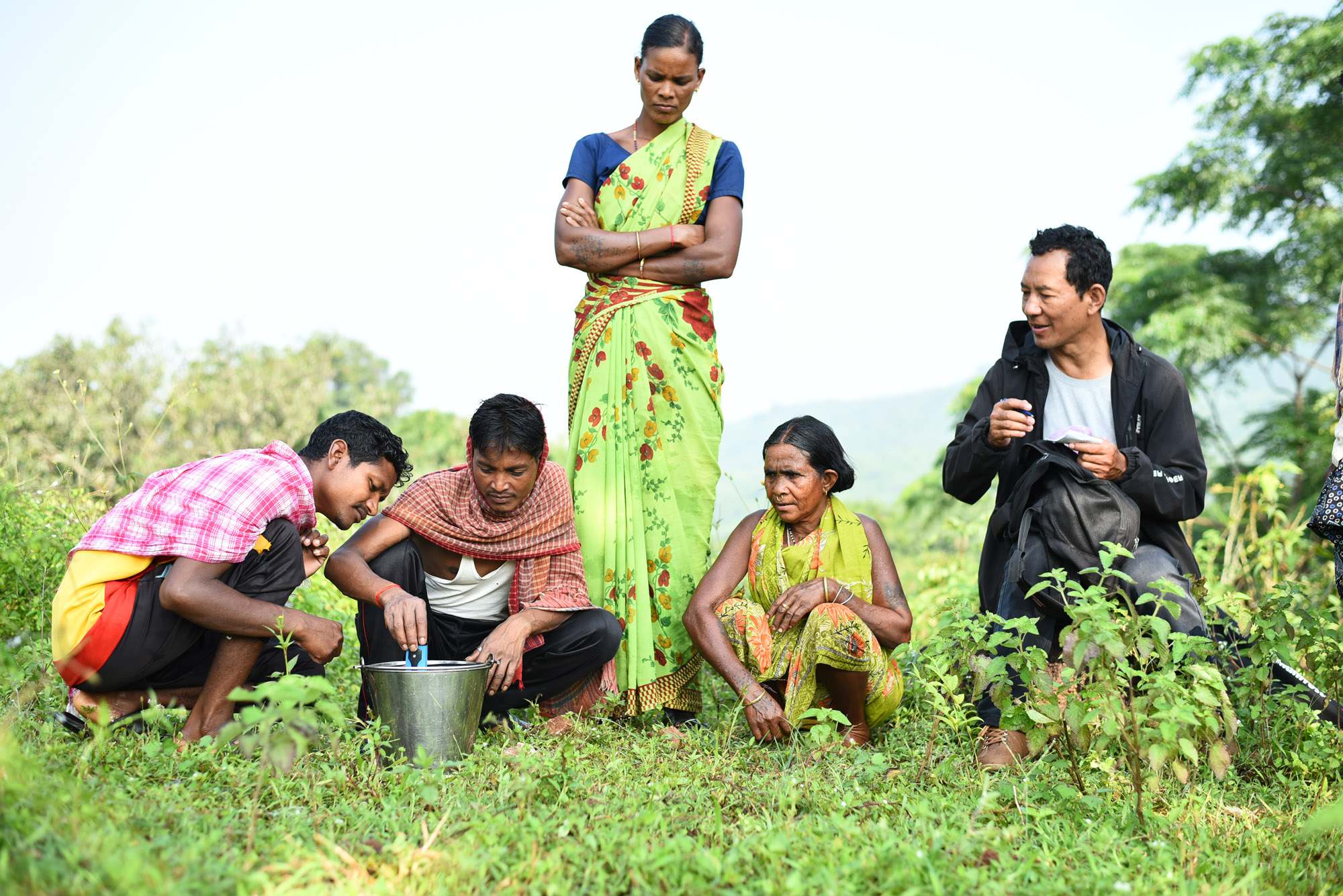Water Quality Management
FeatureBy Joseph Kalassery
20 February 2019

Tribal community in Tukuguda village in Kalahandi district, Odisha, training in water quality testing. Photograph by Ajaya Behera.
In India, 15 lakh children are estimated to die of diarrhoea and 7.3 crores working days are lost due to waterborne diseases resulting in an economic burden of ₹3900 crores a year [1]. Explorations in the villages, where Gram Vikas works, show that water quality issues caused by bacterial contamination and nitrates, and turbidity is a primary concern.
At Gram Vikas, we define safe drinking water as free of bacteria (causing Diarrhoea, Cholera, Dysentery, Typhoid), without nitrate (causing ‘blue baby disease’) and having an acceptable taste.
Gram Vikas is working towards building a programmatic framework for community-level drinking water quality management. We build village level capabilities for quality testing and preliminary diagnosis, as well as taking up necessary repairs/ redressal measures.

Turbidimeter helps measure suspended particles, potentially indicating bacterial contamination. Photograph by Ajaya Behera.
The community will be trained to test the quality of water using test kits and equipment, and district labs will test for contaminants that cannot be detected locally such as arsenic, iron, chlorine, TDS, pH and water hardness for calcium and magnesium.
A technology platform will be developed to serve as a capacity-building tool for the communities, and an information tool for aggregating drinking water quality status. The platform will enable the village-level volunteer and/or the members of the Village Water and Sanitation Committees to manage drinking water quality at the village level.
Those wells found to be defective will be repaired to prevent pollutants from entering the water. Village members will be trained to undertake the necessary repairs building sustainability of the initiative and building skills among the youth.
A full support eco-system for handling quality issues that require more intensive interventions will be created at different levels. This self-funded initiative is a collaboration between Gram Vikas and the village communities.
Testing strip being used to measure the degree of nitrate contamination as indicated by the colour change in the strip. Photograph by Ajaya Behera.
ACKNOWLEDGEMENT
Reference from Khurana I, Sen R. Drinking water quality in rural India: Issues and Approaches, Water Aid, India
ABOUT THE AUTHOR
Joseph Kalassery manages Water Quality projects in Gram Vikas.
RELATED BLOGPOSTS
A remote Adivasi village takes steps to ease water stress through efficient groundwater management
A community-led approach ensures water security, sustaining life in harmony with the environment.
From stigma to sustainability: Transforming menstrual health in schools and villages of rural Odisha
A menstrual health initiative promotes eco-friendly practices while empowering young girls and women with sustainable health solutions.
Lost words, found voices: A language revival adventure in rural Gajapati
An SBI YFI Fellow learns Saura and works with students to create an audio-visual dictionary.